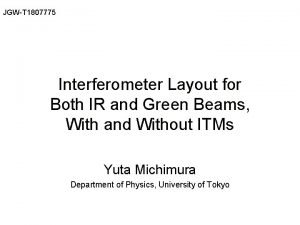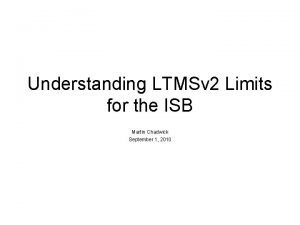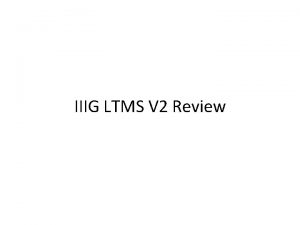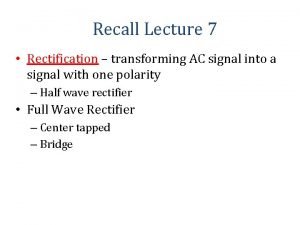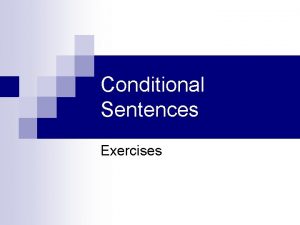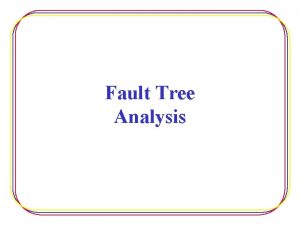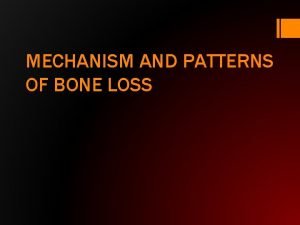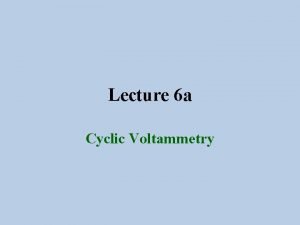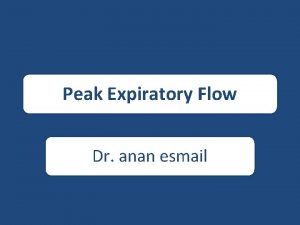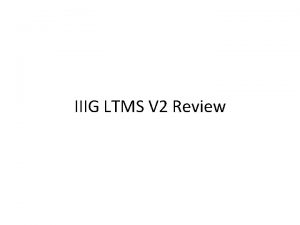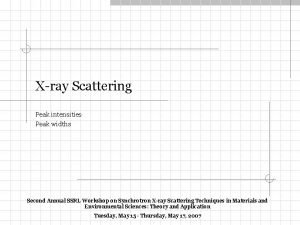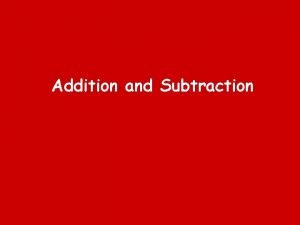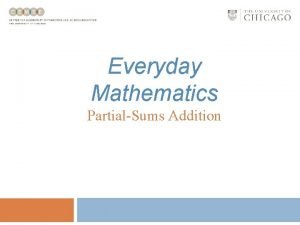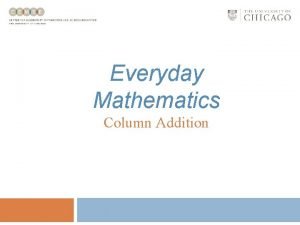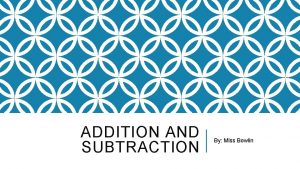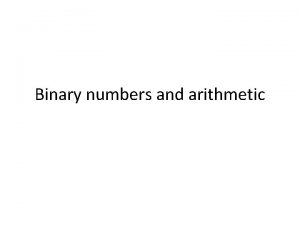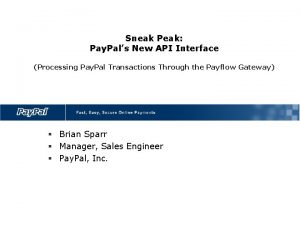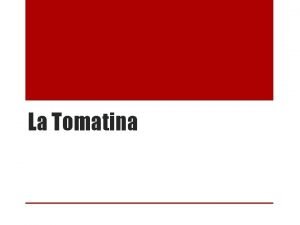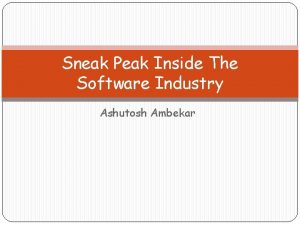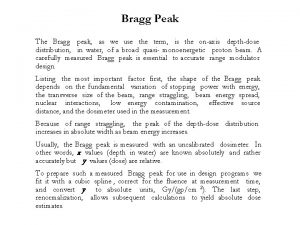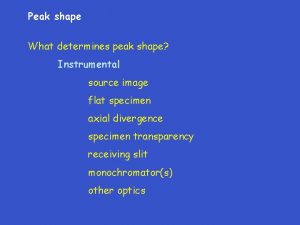The Second Addition of LTMS Theoretical Sneak Peak


























































- Slides: 58

The Second Addition of LTMS (Theoretical Sneak Peak for the VG) LTMS TF SG: April 2010 1

Basic Idea for LTMS 2 nd Edition • A Simpler, More Robust System • Improve Candidate Test Accuracy • Remove Unnecessary Tests and Punishments for Being “Off-Target” • Remove Opportunities for Games and Poor Choice Changes • Standardize Across Test Types as Much as Possible 2

New LTMS Versus Old LTMS • The Showdown 3

DO NOT BE AFRAID • Proposed Changes to LTMS are Slight and are not Expected to Have Major Ramifications 4

Summary of Proposed Changes • No more Consequences for Yi – Eliminate Punishment for Being Different • No more Ri or Qi – Less Games and Invalid Tests • Default Limit of 10 Non-Reference Tests or 18 Months for an Existing Test Stand • Primary and Secondary Parameters • Two Suggested Approaches for Introduction of New Hardware, Parts, Fuel, etc. • Suggestion to Fix Targets, but Update Standard Deviations when Appropriate 5

Summary of Proposed Changes • New Control Charts – EWMA of Yi (Zi) • Continuous Severity Adjustments – SP Sets SA Cap for Being Severe – SP Sets Limit for Being Mild – Shewhart of Residuals: ei=(Yi – Zi-1) • Are you Where you Think you Are • Apply to Primary Parameters Only – Level 3, Level 2, Level 1 – Can Reduce AND Extend Reference Intervals – Undue Influence Analysis 6

Summary of Proposed Changes • Suggested Default l – 0. 2, but 0. 3 a Good One Too • Fast Start to EWMA – Z 0 = Average of First 3 Tests • Initial Calibration – 3 Tests for First Stand in a New Lab • Lab Based Severity Adjustment System – 3 Tests for each and every Stand/Engine • Stand Based Severity Adjustment System 7

Take a Breathe • Any Clarification Questions? 8

Back to the Basics • Do we Wish to Review the Basics of LTMS and Control Charts? 9

Take a Breathe • Do we Understand the Control Charts and their Function? 10

Take a Breathe • Any Questions on the Continuous SA? 11

Flowchart of the New Process • Can Review if Desired 12

New LTMS for the VG • Specific System Suggestions for VG • Examples are Crude – Things Would Likely have Played Out Differently Under the New System – Some Calculations Pretend that References are Candidates 13

New LTMS for the VG • Lab Based Severity Adjustment System • Primary Parameters – Average Engine Sludge – Average Piston Varnish • Secondary Parameters – Rocker Cover Sludge – Average Engine Varnish – Oil Screen Sludge • Start System with “Next” Reference Test after Surveillance Panel Approval 14

New LTMS for the VG 15

New LTMS for the VG 16

New LTMS for the VG 17

New LTMS for the VG 18

New LTMS for the VG 19

New LTMS for the VG 20

New LTMS for the VG 21

New LTMS for the VG 22

New LTMS for the VG 23

New LTMS for the VG 24

New LTMS for the VG 25

New LTMS for the VG 26

New LTMS for the VG 27

New LTMS for the VG 28

New LTMS for the VG 29

New LTMS for the VG • Wow! There are A lot of Slide • For More we Can View the Spreadsheet 30

Take a Breathe • Any Questions 31

Next Steps • Review, Absorb, Cry • Implement … ? • Official Calculations Would be Done by the TMC and Start with “Next” Reference after Adoption 32

Additional Slides 33

LTMS Introduction • What is LTMS? – Control Charting System that Monitors Both Bias and Precision for Both Abrupt Changes and Consistent Trends – Accuracy = Function(Bias, Precision) • Why LTMS? – Maintain Calibration – X Special Causes Protect Quality Reduce Time/Cost – LTMS is a major prerequisite to fair, unbiased, cost effective candidate testing 34

LTMS Introduction • Important Notes – LTMS does not solve problems • It is a tool to help solve problems • It is a tool to facilitate ‘fair’ testing – LTMS is at the mercy of bad practices • LTMS more effective under sound practices – LTMS should serve its purpose and should not be altered to accommodate poorly developed and administered tests – LTMS is not for all tests • Some tests have extremely poor standardization practices 35

LTMS Introduction • Elements of LTMS – Increase value of reference tests • Test to generate necessary data, NOT as punishment – Use of ALL operationally valid data – Actions = Function (Control Chart) – Use of fixed reference oil targets – Use of reference oils that mimic candidates – Standardized control charts – Near real time severity adjustments – Monitoring of different levels of severity (Engine, Stand, Lab, Industry) 36

LTMS Introduction • What is a Control Chart? – Critical tool in LTMS process 37

38

Yi alarm Yi 39

LTMS Introduction • LTMS Prerequisites – Consistent, managed parts supply – Consistent, managed fuel supply – Consistent test operation and hardware – Consistent, managed supply of reference oils that mimic the performance of candidate oils – Approximate data normality (transformations) – Sufficient reference testing per lab – Baseline matrix or round robin or data history 40

LTMS Introduction • Perspective – Why Do all This? • An Investment • Cost Effective Testing • Poor Oils Must Fail and Good Oils Must Pass 41

LTMS Methodology • Notation – k = Standard Deviation Multiplier for Control Chart Limit – Xi = Test Result at Test/Time i – Ti = Transformed Test Result at Test/Time i • Example: Ti = LN(Yi) – Yi = Standardized Test Result at Time/Test i • Yi = (Ti - Reference Oil Mean) Reference Oil Standard Deviation – ei = Prediction Error at Time/Test i • ei = Y i - Z i-1 42

LTMS Methodology • Notation – Zi = Exponentially Weighted Moving Average of Yi • Zi = (l) Yi + (1 - l) Zi-1 – Lambda = l = Tuning parameter for EWMA 43

LTMS Methodology • The Exponentially Weighted Moving Average (EWMA) Zi = (l) Yi + (1 - l) Z i-1 where: 0 < = l < = 1 , Z 0 = Start Zi has a Memory, it Captures Process History Zi is the One-Step-Ahead Predictor of the Process VAR(Zi) = (l / (2 - l)) x VAR(Yi ) 44

LTMS Methodology • EWMA Example (Set l = 0. 3) Zi = (l) Yi + (1 - l) Z i-1 Y 1 = 0. 5 Z 1 = (0. 3)(0. 5) + (0. 7)(0) = 0. 15 Y 2 = 1. 0 Z 2 = (0. 3)(1. 0) + (0. 7)(0. 15) = 0. 405 Y 3 = 0. 75 Z 3 = (0. 3)(0. 75) + (0. 7)((0. 405) = 0. 5085 Z 3 = (0. 3)(Y 3) + (0. 3)(0. 7)Y 2 + (0. 3)(0. 7)(Y 1) + (0. 7)(0. 7)(Z 0) 45

Yi Zi 46

Yi Zi ei 47

48

LTMS Methodology • ei Example ei = Yi - Z i-1 Z 10 = 2. 5 Y 11 = 2. 5 e 11 = 2. 5 - 2. 5 = 0. 0 No Problem Y 12 = 0. 0 e 12 = 0. 0 - 2. 5 = -2. 5 Problem 49

Continuous SA • Why the SPOTLIGHT on Continuous SA? – Because Why the Continuous SA? • Because Best Overall ‘GOODNESS’ • Do we Wish to Review? 50

Measure of Goodness • Spread of Data Around Expected Result – Accuracy • Mean-Squared Error (MSE) 2 – MSE = E{(Actual – Expected) } 2 • MSE = E{(Actual – Predicted) } – MSE = Variance + (Bias) 2 • MSE = Variance + (Uncorrected Process Bias) 2 • What Should We Expect? – We Expect Test Results, Corrected or Uncorrected, to be on Target with Minimal Variance Around the Target – We Expect a Small MSE 51

Calculation Method • Compare MSE of Different Adjustment Methods Over Different Bias (Test Shift) Scenarios – Theoretical Calculation for Situation of No Bias – 10, 000 Simulations in Cases of Bias (Test Shift) • Mean Target is Zero (0) and True Standard Deviation is One (1) • Comparisons are Made at 2, 4, and 10 Tests – What is the average variability of my test results after correcting after 2, 4 and 10 tests after a shift – It is Very Unlikely that No Shifts Occur Within 10 Reference Tests 52

EWMA Continuous Adjustment • IFF No Bias, No Adjustment Best for RMSE – BUT • Differences in RMSE are Very, Very Small • Better RMSE for EWMA from 0. 2 to 0. 4 Bias Depending on n and Lambda • Given Historical Data, Probability of Test Shifts and Lab Bias is High • Best Lambda Depends on Size of Shift/Bias – Bias Less than 0. 5 • Small, l= 0. 1 or l= 0. 2, Better – Bias Greater than 0. 75 • Larger, l= 0. 3 or l= 0. 4 Better – Selection of l= 0. 2 Appears to be a Good Compromise 53

54

55

56

Fast Start to the EWMA • Set Z 0 to the Average of the First 3 Reference Tests • Results in an Overall Reduction of the RMSE 57

58
 Jgwt
Jgwt Ltms
Ltms Ltms
Ltms How to convert peak to peak voltage to rms
How to convert peak to peak voltage to rms Peak to peak voltage
Peak to peak voltage Widow's peak is dominant to no widow's peak
Widow's peak is dominant to no widow's peak If they have time at the weekend they will come to see us
If they have time at the weekend they will come to see us Is it ok to sneak food into the movies argumentative essay
Is it ok to sneak food into the movies argumentative essay Nasa fmea
Nasa fmea 186 282 miles per second into meters per second
186 282 miles per second into meters per second Thẻ vin
Thẻ vin Thể thơ truyền thống
Thể thơ truyền thống Các châu lục và đại dương trên thế giới
Các châu lục và đại dương trên thế giới Từ ngữ thể hiện lòng nhân hậu
Từ ngữ thể hiện lòng nhân hậu Diễn thế sinh thái là
Diễn thế sinh thái là Ví dụ giọng cùng tên
Ví dụ giọng cùng tên Phép trừ bù
Phép trừ bù Tỉ lệ cơ thể trẻ em
Tỉ lệ cơ thể trẻ em Chúa yêu trần thế
Chúa yêu trần thế Khi nào hổ con có thể sống độc lập
Khi nào hổ con có thể sống độc lập Lời thề hippocrates
Lời thề hippocrates đại từ thay thế
đại từ thay thế Quá trình desamine hóa có thể tạo ra
Quá trình desamine hóa có thể tạo ra Vẽ hình chiếu vuông góc của vật thể sau
Vẽ hình chiếu vuông góc của vật thể sau Công của trọng lực
Công của trọng lực Hình ảnh bộ gõ cơ thể búng tay
Hình ảnh bộ gõ cơ thể búng tay Thế nào là mạng điện lắp đặt kiểu nổi
Thế nào là mạng điện lắp đặt kiểu nổi Dot
Dot Vẽ hình chiếu đứng bằng cạnh của vật thể
Vẽ hình chiếu đứng bằng cạnh của vật thể Phản ứng thế ankan
Phản ứng thế ankan Các môn thể thao bắt đầu bằng tiếng đua
Các môn thể thao bắt đầu bằng tiếng đua Gấu đi như thế nào
Gấu đi như thế nào Sự nuôi và dạy con của hươu
Sự nuôi và dạy con của hươu điện thế nghỉ
điện thế nghỉ Một số thể thơ truyền thống
Một số thể thơ truyền thống Nguyên nhân của sự mỏi cơ sinh 8
Nguyên nhân của sự mỏi cơ sinh 8 Trời xanh đây là của chúng ta thể thơ
Trời xanh đây là của chúng ta thể thơ Frameset trong html5
Frameset trong html5 Số nguyên tố là gì
Số nguyên tố là gì Thiếu nhi thế giới liên hoan
Thiếu nhi thế giới liên hoan Phối cảnh
Phối cảnh Các châu lục và đại dương trên thế giới
Các châu lục và đại dương trên thế giới Thế nào là hệ số cao nhất
Thế nào là hệ số cao nhất Sơ đồ cơ thể người
Sơ đồ cơ thể người Tư thế ngồi viết
Tư thế ngồi viết đặc điểm cơ thể của người tối cổ
đặc điểm cơ thể của người tối cổ Cái miệng nó xinh thế chỉ nói điều hay thôi
Cái miệng nó xinh thế chỉ nói điều hay thôi Mật thư tọa độ 5x5
Mật thư tọa độ 5x5 Bổ thể
Bổ thể Tư thế worm breton là gì
Tư thế worm breton là gì ưu thế lai là gì
ưu thế lai là gì Tư thế ngồi viết
Tư thế ngồi viết Infrabony defects wall hemiseptal
Infrabony defects wall hemiseptal Square vs round neckline
Square vs round neckline Cyclic voltammetry
Cyclic voltammetry Fashion cycle stages
Fashion cycle stages Peak discharge
Peak discharge Exciton peak
Exciton peak Peak flow rate normal range
Peak flow rate normal range
